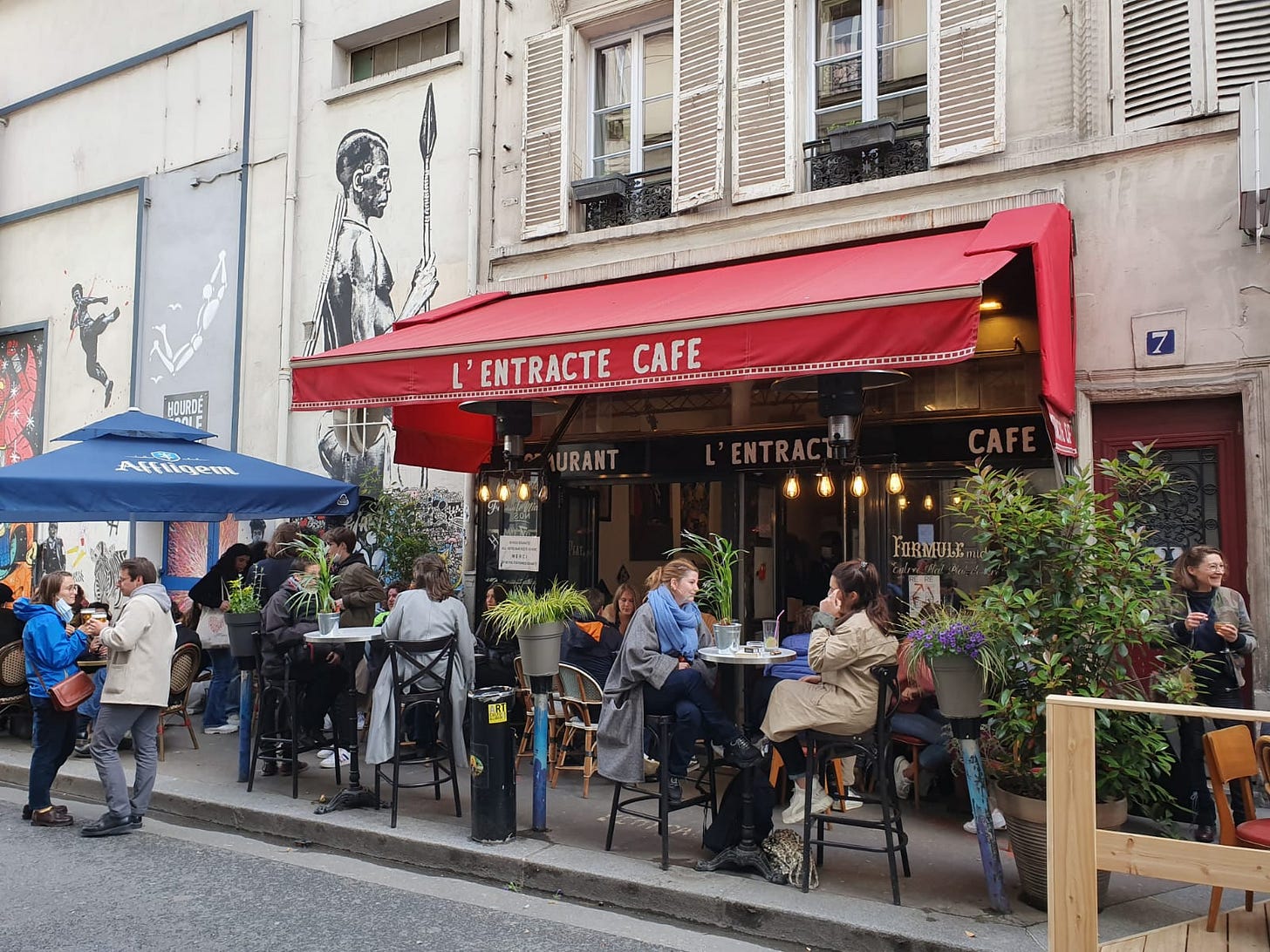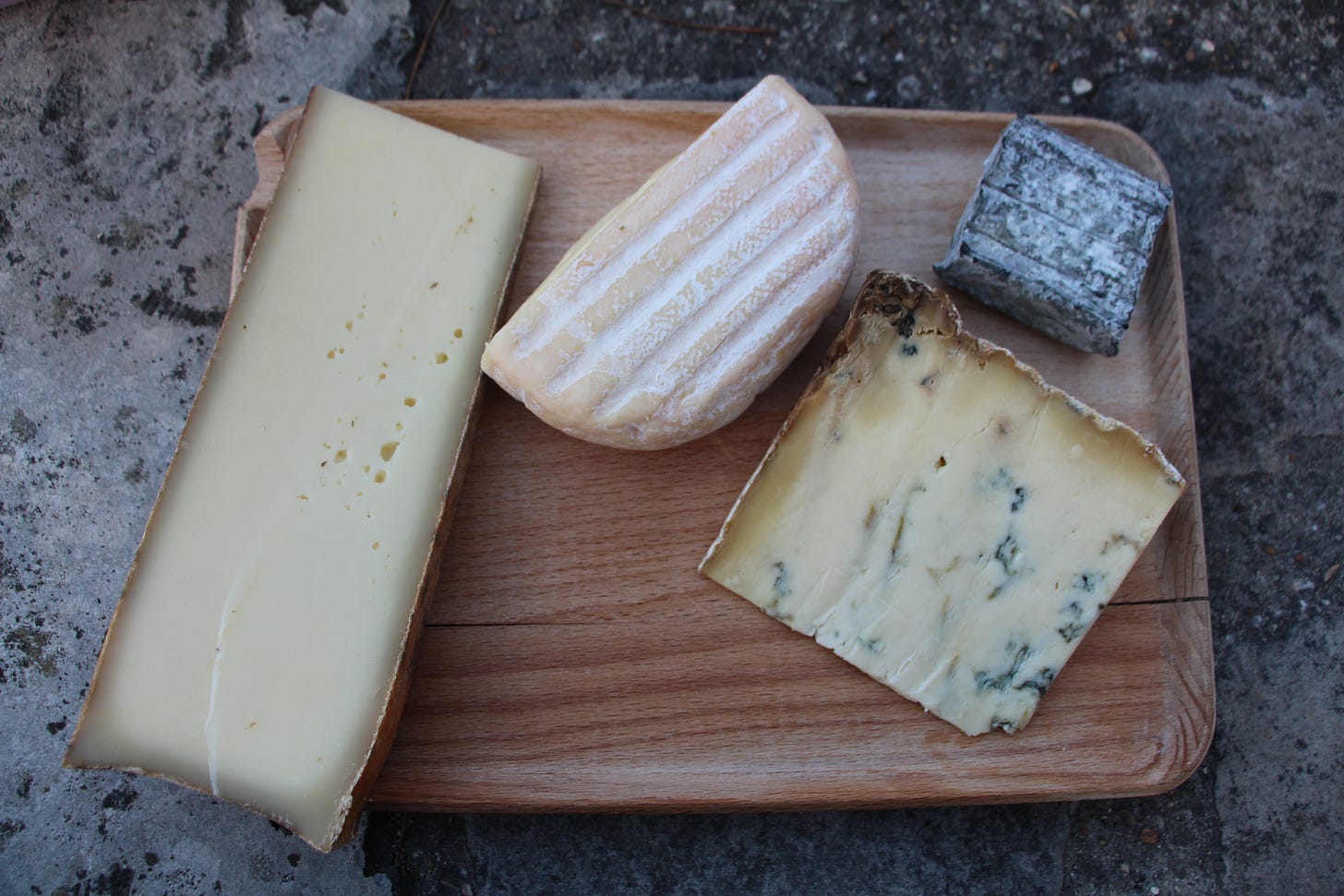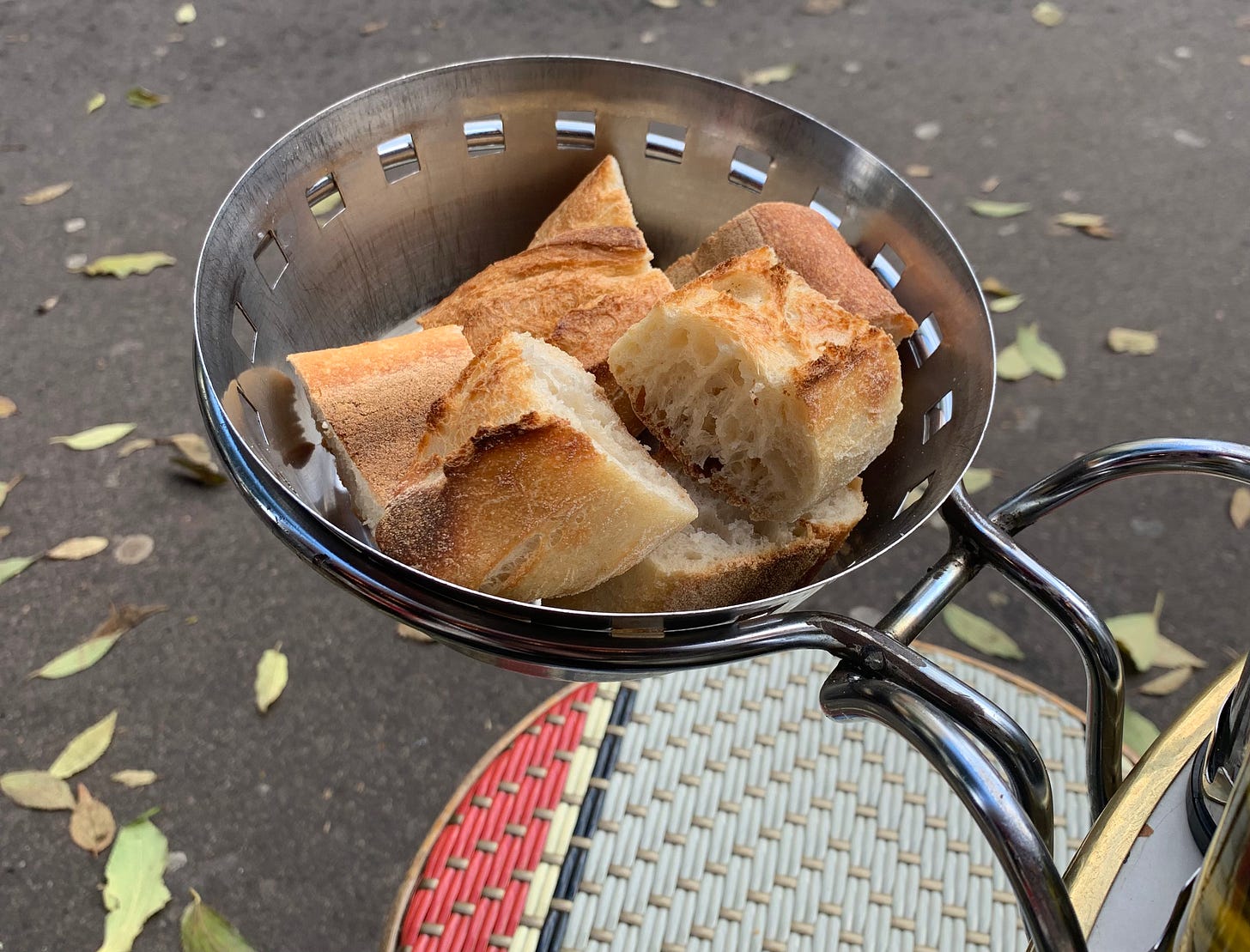Emily In France Exclusive 🇫🇷 5 Things That Might Surprise You About French Dining
From the desk of an expat.
These days, the stereotype of the snide or rude Parisian waiter looking down his nose at the lowly Anglophone is mainly a vestige of the past. Most Parisians – including waiters! – love practicing their English with native speakers, making it all the more clear, in my humble opinion, that “rudeness,” in many cases, is chiefly a question of cultural incomprehension. I examine cultural differences between France and the Anglo word at length in my podcast, Navigating the French, and the very first episode offers a particularly apt illustration. In this conversation with author Julie Barlow, we explored the importance of bonjour. Eliding this greeting can lead to a massive misunderstanding, with both the French and foreign interlocutor assuming the rudeness of the other.
But bonjour is just the tip of the iceberg, when it comes to miscommunications and surprises in the realm of French dining.
Many surprises foreigners may encounter on the French dining scene are linked to the very format of the French meal, which typically unfurls in multiple courses, even during a weekday lunch. (And this, despite the fact that the sequential style of the so-called service à la russe is a relatively recent arrival on the French culinary landscape, introduced by way of Russia in the 19th century, when it supplanted the landscaped feasts that had thus far defined service à la française.) In modern France, eating in courses is so much the norm that in 2010, when the gastronomic French meal was protected by UNESCO as intangible world heritage, it was defined according to a strict structure, encompassing an aperitif, starter, main, cheese, dessert, and digestif. Even a run-of-the-mill bakery will offer a “formule” including a main, a dessert, and a drink, and children in French school regularly get four courses in the school cafeteria (and two hours in which to eat them).
This fact – and a handful of other norms – informs many traditions regarding the French approach to dining, some of which can be baffling for foreigners. Here are the five things I think Americans will find most surprising about dining in France.
1. Cheese is not an appetizer.
So-called “charcuterie” boards have positively taken over Instagram, and while they are indeed beautiful, bedecked with flowers, nuts, spreads, and fruits, I take issue with their name: After all, charcuterie is a very specific category of prepared meats, which may be either dry-cured (salami, jambon cru, saucisson), potted (pâté, terrine), or smoked (andouille de Guéméné, saucisse de Morteau). Not included in that category are smoked Marcona almonds, dried figs, or honeycomb… and certainly not cheese. (Unless it’s head cheese.)
The fact that Americans have united both cheese and charcuterie on the same board is unsurprising to me; after all, in the U.S., cheese boards are a fairly familiar hors d’oeuvre. But in France, while charcuterie is indeed a common first course, having cheese before the main is nearly unheard of. Instead, in people’s homes, cheese is served after the main and before the dessert, while in restaurants, it’s often a one or the other sort of thing.
There are two exceptions I can think of. The first is in the context of an apéro dinatoire, whereby the strict structure of courses is supplanted with a buffet of dishes ranging from quiches to pizza to verrines to cake salé. This style of dining is becoming more popular, particularly among young people, which, as I discussed in an article for Whetstone on the evolution of the structure of the French meal, may be the very reason France sought to protect its repas gastronomique in the first place.
The other exception is when one is enjoying a pre-dinner apéritif at a café or wine bar that doesn't have a full liquor license. Here, to enjoy a glass of wine, one must also eat, and a cheese board, charcuterie board, or planche mixte pairing both cheese and charcuterie is an easy offering that doesn't require a full kitchen.
2. Don’t expect a bread plate.
Bread is omnipresent in France from the breakfast tartine to a dessert of pain perdu, with the average bread consumption of a French person amounting to about a half a baguette per person per day. We take our bread seriously, here, even discerning an award for the capital’s best baguette every year.
But while there will likely be bread at every meal you eat in France, don't expect butter unless you're at breakfast… and don't expect a bread plate either.
Keep reading with a 7-day free trial
Subscribe to Emily in France to keep reading this post and get 7 days of free access to the full post archives.





